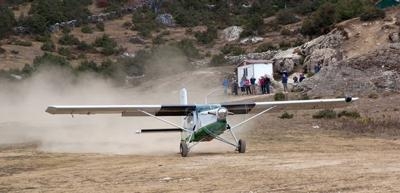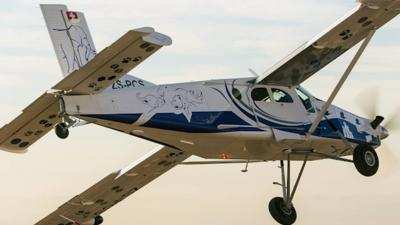Sat, Aug 08, 2020
AD 2020-16-02 Describes The Unsafe Condition As Rudder Shaft Assemblies With Incorrect Rivet Configurations
The FAA is adopting a new airworthiness directive (AD) for Pilatus Aircraft Ltd. Models PC-6, PC-6/350, PC-6/350-H1, PC-6/350-H2, PC-6/A, PC-6/A-H1, PC-6/A-H2, PC-6/B-H2, PC-6/B1-H2, PC-6/B2-H2, PC-6/B2-H4, PC-6/C-H2, PC-6/C1-H2, PC-6-H1, and PC-6-H2 airplanes.

This AD results from mandatory continuing airworthiness information (MCAI) issued by an aviation authority of another country to identify and correct an unsafe condition on an aviation product. The MCAI describes the unsafe condition as rudder shaft assemblies with incorrect rivet configurations. The FAA is issuing this AD to address the unsafe condition on these products. This AD is effective September 9, 2020.
Supplementary Information: The FAA issued a notice of proposed rulemaking (NPRM) to amend 14 CFR part 39 by adding an AD that would apply to Pilatus Aircraft Ltd. Models PC-6, PC-6/350, PC-6/350-H1, PC-6/350-H2, PC-6/A, PC-6/A-H1, PC-6/A-H2, PC-6/B-H2, PC-6/B1-H2, PC-6/B2-H2, PC-6/B2-H4, PC-6/CH2, PC-6/C1-H2, PC-6-H1, and PC-6-H2 airplanes. The NPRM was published in the Federal Register on July 5, 2019 (84 FR 32099). The NPRM proposed to correct an unsafe condition for the specified products and was based on AD No. 2018-0222, dated October 19, 2018, issued by the European Aviation Safety Agency (EASA), which is the Technical Agent for the Member States of the European Community (referred to after this as “the MCAI”).

The MCAI states:
- During a recent check flight with a PC-6, the pilot experienced loss of rudder control. The consequent precautionary landing resulted in a runway excursion and damage to the aeroplane, but without serious injuries to the occupants. The post-event inspection of the affected rudder shaft assembly found an incorrect rivet configuration. Subsequent investigation results identified that the tapered pins had been replaced with an insufficient quantity of rivets of unknown origin, which effectively constituted a modification that does not conform to any of the three different Pilatus-approved configurations. Prompted by this event, five more aeroplanes were inspected and various non-standard rivet configurations were found in the same area. It cannot be excluded that more PC-6 aeroplanes have had a similar modification applied.
- This condition, if not detected and corrected, could lead to failure or loss of rivets, possibly resulting in reduced control of the aeroplane. To address this potential unsafe condition, Pilatus Aircraft Ltd issued the [service bulletin] SB to provide inspection instructions.
- For the reasons described above, this [EASA] AD requires a one-time inspection of the affected part to determine the rivet configuration and, depending on findings, accomplishment of applicable corrective action(s). This [EASA] AD also requires inspection of affected parts held as spare, and depending on findings, corrective action(s), prior to installation.
More News
Outboard Section Of The Right Wing And The Right Flap Separated In Flight And The Airplane Impacted A Farm Field Analysis: The pilot was approaching his destination airport under i>[...]
Final Approach Fix The fix from which the final approach (IFR) to an airport is executed and which identifies the beginning of the final approach segment. It is designated on Gover>[...]
"Our choice of when to respond, how to respond and on which targets to respond is a consideration that we make every time... Netanyahu also noted that anyone attacking Israel &ldqu>[...]
Estimated (EST) When used in NOTAMs “EST” is a contraction that is used by the issuing authority only when the condition is expected to return to service prior to the e>[...]
Aero Linx: Coalition of Airline Pilots Associations (CAPA) The Coalition of Airline Pilots Associations (CAPA) is the world’s largest pilot trade association representing ove>[...]
 NTSB Final Report: Cessna 177B
NTSB Final Report: Cessna 177B ANN's Daily Aero-Term (05.08.25): Final Approach Fix
ANN's Daily Aero-Term (05.08.25): Final Approach Fix Aero-News: Quote of the Day (05.08.25)
Aero-News: Quote of the Day (05.08.25) ANN's Daily Aero-Term (05.09.25): Estimated (EST)
ANN's Daily Aero-Term (05.09.25): Estimated (EST) ANN's Daily Aero-Linx (05.09.25)
ANN's Daily Aero-Linx (05.09.25)




